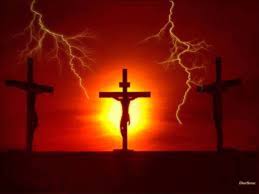Vijñānabhairava-tantra śloka 35 the void in the central channel (suṣumnā)
“The central channel stands at the centre like the stem of a lotus. By meditating on this space within, the God shines forth, because of the Goddess.”
मध्यनाडी मध्यसंस्था बिससूत्राभरूपया।
ध्यातान्तर्व्योमया देव्या तया देवः प्रकाशते॥ ३५॥
madhyanāḍī madhyasaṁsthā bisasūtrābharūpayā |
dhyātāntarvyomayā devyā tayā devaḥ prakāśate || 35 ||
This śloka is concerned with the context in which the Goddess can be effective. She is the major operative force in his śloka. It is because of her that the God becomes evident.
The first line of the śloka gives a set of balances.
- The first is between the left (iḍā ) and right (piṅgalā) channels of the body. Iḍā is described as ‘white’, ‘feminine’, ‘cold’, and represents the ‘moon’ while piṅgalā is described as ‘red’, ‘masculine’, ‘hot’, and represents the ‘sun’. The channels start from the base chakra (mūlādhāra), cross from side to side of the body, and finally meet at the point between the eye-brows (ājñā). The subtle-breath (prāṇa) circulates through them.
Between iḍā and piṅgalā is the central channel (madhyanāḍī) which is called suṣumnā. It is where the left and right channels balance their energies.
The Spandakārikā, another of the texts of Kashmir Shaivism, associates the practice of this śloka with the outward (prāṇa) and inward (apāna) breaths. The contrasting forces of exteriority and interiority are balanced. Persons with an extrovert nature, if not balanced by a sense of interiority, become bombastic. Likewise persons with an excessively introvert character lose touch with reality. A balance of outward (prāṇa) and inward (apāna) is necessary. A balanced personality will be both self-aware and outer-aware.
From another yogic viewpoint, the balance of the prāṇa and apāna lead to the from of subtle breath called samāna (‘equality’, ‘evenness’) and from this comes the ‘upward rising subtle-breath’ (udāna) which in turn leads to the vyāna and the full flowering, the energizing of the all the centers, and faculties, so that in the end the whole person is empowered.
It is also the state of bhairavamudrā where inner and outer coincide. When Bhairava looks within himself he sees the whole world, since all things proceed from him. If he looks at the world outside he recognizes it as his very self.
- The second balance is between upper and lower. The image is that of the lotus stalk (bisa-sūtra), which comes out of the mud, rises and flowers on the surface of the water. The stalk links lower and upper, immanence and transcendence, the transience (saṁsāra) of water and the infinity of space. Both upper and lower are present, neither is rejected.
The stalk is a tube, and therefore is empty in its inmost core. This is the suṣumnā, the central channel, which is not anatomically visible but is experienced in the body, particularly along the spine.
The first half of second line of the śloka describes the practice
The practitioner meditates (dhyātā) on the emptiness (vyoman) of the ‘stalk’ within himself (antar), located between right and left, between base and height. In this way he ensures there is openness and freedom; he makes sure there is neither rejection nor control.
The second half of second line of the śloka describes the result
As a result the Goddess is free to function. She becomes active and energetic, and under her influence (devyā) the suṣumnā becomes a place of movement, as the energy unfurls from the base (mūlādhāra) to the highest level, to the thousand-petalled lotus (sahasrāra) at the crown of the head. The goddess rises spontaneously and brings the practitioner to fullness of knowledge. Because of her (tayā) the God (devaḥ) shines forth (prakāśate).
It is then that the practitioner realizes he is not just like Śiva but is Śiva. He is full of light, he is light.
The Christian dimension

This śloka adds further meaning to the cross, the major symbol of Christianity. The arms of the cross can represent the balance between interiority and exteriority, ‘left’ and ‘right’ with all its meanings. His open arms embrace all realities, good and evil, joy and sorrow, times past and future, all peoples, all religions and all cultures. Nothing is rejected. The vertical ‘stem’ (sūtra) represents the balance between heaven and earth. He is the divine Word made flesh, the God-man, coming from the heights and entering into the depths. Jesus hangs in the middle (madhya) of these four directions. He is completely open, becoming sheer space (vyoman). He receives all.
It is precisely by entering into this nothingness, that he arrives his glory, receiving a name above all other names. (cf. Ph 2:5-11)
Christians make the sign of the cross frequently, as a sign that they join with Christ in all the meaning of the cross.

